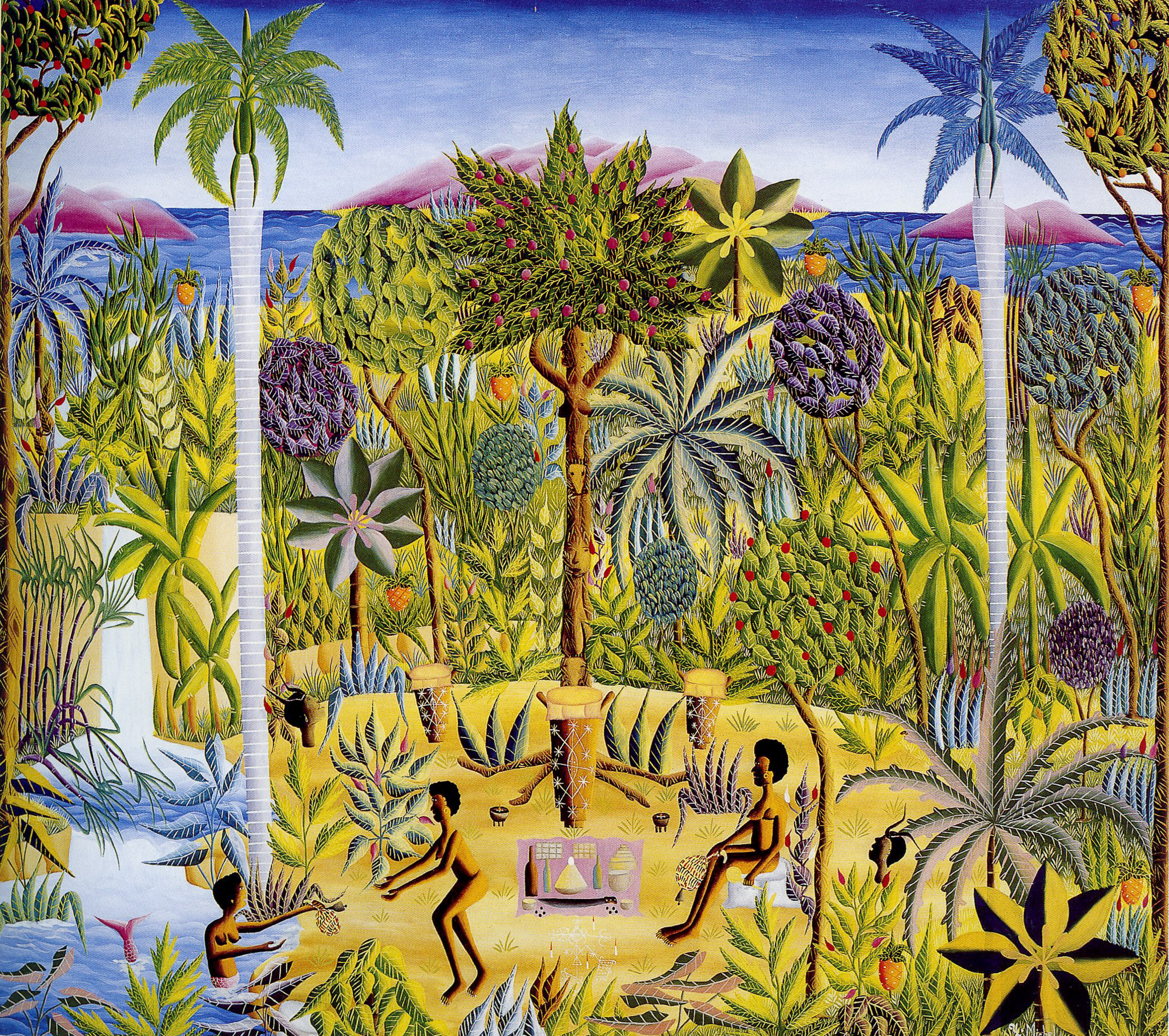oil on board
36 x 40 in.

The ceremony depicted in this painting, which the artist has called, “an invocation of La Sirene”, takes place next to the ocean. On the left side of the painting, La Sirene emerges from a stream that flows directly from the ocean into the ritual space. Just visible over the top of the dense, lushly patterned foliage of the sacred place are the three islands associated with Agwe, vodou spirit of the sea. Yves Michel referred to this ritual as a seremoni mistik (mystical ceremony). Its mystical power comes from the fact that it focuses on one of the most meaning charged elements used in vodou, water. The water that separates Haiti from Africa, both the continent of Africa and the watery land of the dead called Ginen (Africa), the same water that carried the Africans into slavery in the Caribbean, also makes it possible for African spirits and ancestors to emerge in Haiti when the living need them.
The mambo priestess on the far right has her sacred rattle in hand. Three drums, decorated with veve, are waiting. Food offerings, among them a white egg balanced on a pyramid of white flour for the serpent spirit Damballah, and ritual implements, including a sacrificial knife, lie on a cloth spread in front of a veve for the vodou water spirit Simbi. Simbi, an arcane and elusive Petwo lwa (spirit) often represented as a crab, is a natural choice to lead seremoni mistik. The viewer can tell this is an important ceremony because “bulls” have been sacrificed. Human heads with horns, the signature trait of Bosou, a bull spirit, sit on the ground, one on either side of the sacred space. What has gone on before we can only guess, but at the moment captured in Michel’s painting, the naked woman in the center of the picture receives her ason, a sacred rattle emblematic of the vodou priesthood, directly from the hand of La Sirene.
Many stories are told in Haiti about children or young adults abducted by the spirits. On returning, they claim to have spent a ritualistic three or seven days or years under the water. Initiations into the vodou priesthood are said to take place aba dlo (under the water). Direct initiation from the spirits provides an alternative path to religious leadership. The conventional path to initiation can be both financially and socially encumbering because the vodou priest or priestess who “gives the ason” can both charge a lot of money for the initiation ceremony itself, and make lifelong demands on his or her initiates. Initiations carried out below the water circumvent these difficulties.
Brown, Karen McCarthy. Tracing the Spirit: Ethnographic Essays on Haitian Art: from the Collection of the Davenport Museum of Art. The Davenport Museum of Art, 1995.